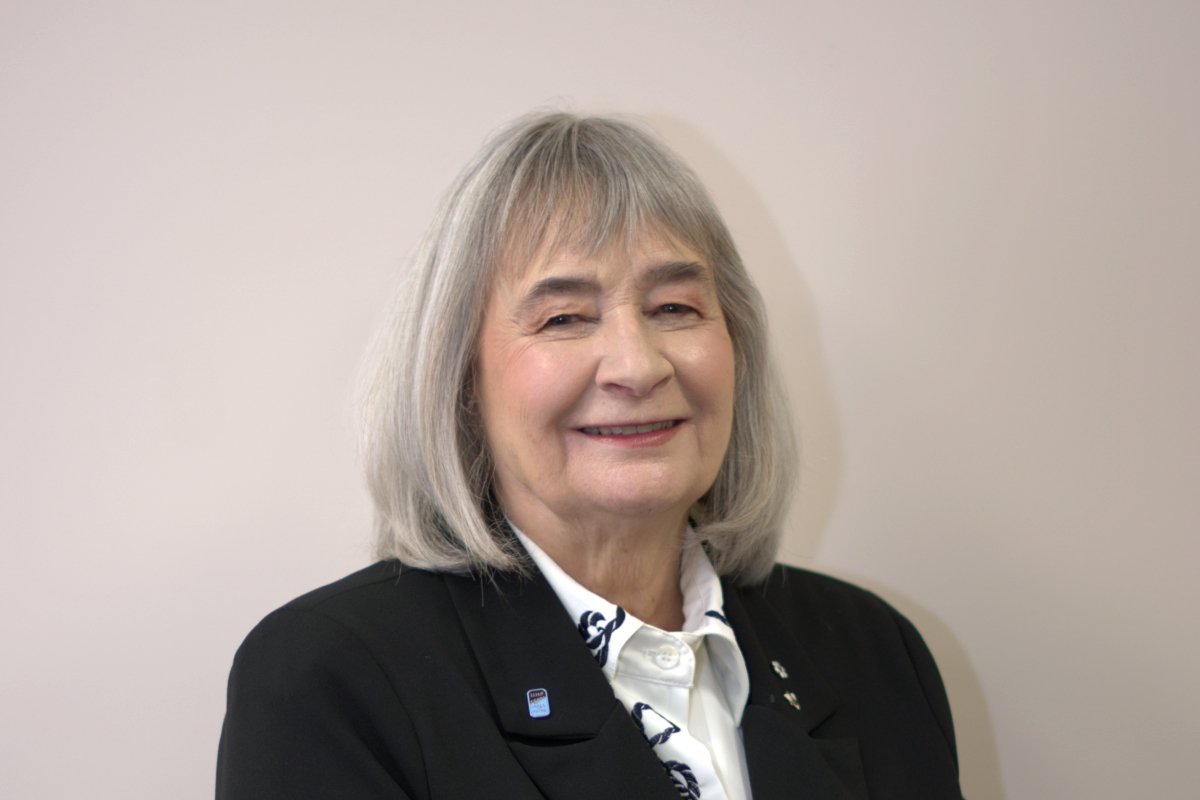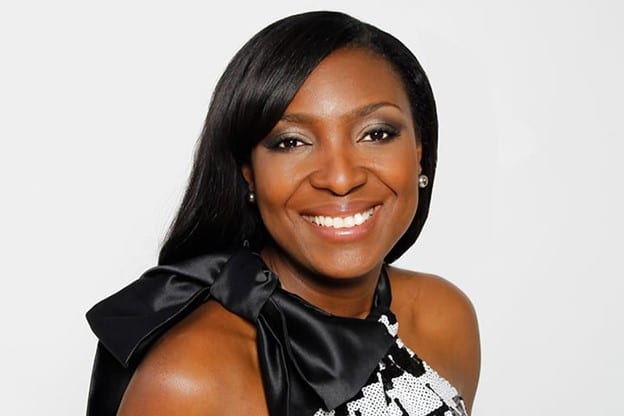Fran Rider is a prominent figure in women’s hockey, known for pioneering efforts in advancing opportunities for female athletes. As the CEO of Ontario’s Women’s Hockey Association (OWHA), Rider has played a pivotal role in shaping the landscape of women’s hockey in Ontario and beyond.
With a career spanning over four decades, Rider’s deep passion for the sport and unwavering advocacy for female athletes have driven the progress we witness today. Her journey in hockey commenced as both a player and coach and her intense love for the game was evident from the onset.
Recognizing the immense potential of women’s hockey, Rider became a vocal advocate for its expansion. Under her leadership, the OWHA has made significant strides in promoting equality and inclusivity within the sport, creating an environment where aspiring young athletes can flourish, and pursue their dreams.
One of Rider’s most notable achievements has been her instrumental role in establishing the Ontario Women’s Hockey League (OWHL), a premier platform for women’s hockey talent to compete at the highest levels. Her visionary leadership has transformed the OWHL into a thriving hub for elite female players, with a strong focus on player development, teamwork, and sportsmanship.
Beyond her contributions to the game’s competitive aspect, Rider is a dedicated mentor and backer for female coaches and officials. She tirelessly champions the importance of women taking leadership roles within the sport, inspiring the next generation of coaches and referees to pursue their passions.
Furthermore, Rider is a highly sought-after speaker, sharing her insights and expertise with audiences worldwide. Her extensive hockey knowledge is engaging and inspiring, leaving a lasting impact on all who hear her speak.
In essence, Fran Rider’s legacy within Ontario’s Women’s Hockey Association embodies empowerment, growth, equality, unwavering passion, and a profound love for the game.
Regarding your journey in women’s hockey, can you share the story of your early involvement in the sport and what motivated you to assume a leadership role?
I had a fiery passion for hockey, ignited during my youth. Growing up in a sports-oriented family in Etobicoke, my father — an athlete and Toronto Firefighter; my mother – an advocate for children and loyal Maple Leafs, Argos, and Blue Jays fan; and my older brother instilled in me a deep appreciation for sports. While I enjoyed various sports activities, hockey held a special place in my heart.
In 1967, I stumbled upon an article in the Toronto Telegram about a women’s hockey tournament in Brampton. Intrigued by the opportunity, I joined a team despite never having played. I vividly recall my hesitation to step onto the ice, as it was full-contact hockey. Initially, I wanted to be a mere observer from the bench, but my teammates emphasized the importance of being part of a team over individual performance. Their approval was truly eye-opening and inspiring.
As for assuming a leadership role, I initially doubted my abilities, but two individuals — Brent Ladds from the Ontario Hockey Association and Frank Champion Demers — encouraged me to take on leadership positions. While initially lacking confidence in my leadership skills, I embraced a collaborative approach.
Could you elaborate on your responsibilities and influence in shaping the culture and future of women’s hockey as the CEO of the Ontario Women’s Hockey Association?
My role as CEO of the Ontario Women’s Hockey Association (OWHA) is unique and impactful. Founded in 1975, the OWHA is dedicated to advancing women’s hockey and is the only such organization globally. With a membership of approximately 60,000, including 40,000 players, the OWHA’s mission extends beyond the ice rink.
We’re not just shaping the game’s future but redefining what women’s sport can be. We operate as a provincial sports organization (PSO), and our strength lies in maintaining a flexible and empowering culture. We aim to keep things simple and ensure that everyone involved does their best to serve our extensive network of participants.
What strategies have you taken to foster diversity and inclusivity within Ontario’s women’s hockey community?
From the beginning, diversity, and inclusivity have been foundational principles of women’s hockey. Our sport welcomes anyone who wants to play, regardless of age or background. We work closely with various communities to ensure that hockey is accessible to everyone. We also understand the profound impact that sports can have on young people’s physical and mental well-being, especially those facing unique challenges.
Our commitment to inclusivity extends to educating and disciplining individuals who misbehave within our community, reinforcing the values of respect and unity. While we have made strides in fostering inclusivity, we recognize that there’s always room for improvement. We’re continually seeking ways to expand our efforts and provide more opportunities for girls and women to be part of our sport and, by extension, society.
Are there any particular athletes whose development stands out as a testament to the growth and potential of women’s hockey?
There are countless high-performance players like Angela James, Cathy Phillips, Vicky Sunohara, and Ottawa PWHL captain Brianne Jenner, who made significant contributions and served as inspirations for the sport. However, it’s essential to highlight players’ achievements at all levels. Many girls who started house league hockey became influential leaders in various fields, proving that the lessons and skills learned through sports can have a lasting impact on one’s life.
Haley Wickenheiser is another remarkable example. Her excellence on the ice and her ability to represent Canada in both hockey and other sports, like ball, showcase the multifaceted talents that female athletes possess. Even beyond her hockey career, she pursued her dream of becoming a medical doctor, demonstrating the importance of balancing education and sports.
How has government policy influenced the trajectory of women’s hockey during your tenure, and what policy changes or enhancements do you believe are still necessary?
Government support has played a pivotal role in developing women’s hockey. In the early stages of our organization, we received crucial funding from the Ontario government, which helped establish a foundation for women’s hockey in the province. Continued financial support from the government is vital to ensure that women’s sports continue to grow and thrive. It’s not just about funding a game; it’s about investing in the future of society. Women’s sports, including hockey, give young girls the confidence and skills to become strong leaders.
One specific initiative I’d like to highlight is Rowan’s Law, which focuses on concussion management. This comprehensive program recognizes the seriousness of concussions as brain injuries. It emphasizes the importance of player safety. Collaborative efforts like these between the government and sports organizations are essential for the well-being of athletes.
What do you consider the key factors that have propelled women’s hockey in Ontario and beyond to its current level of success?
I consider grassroots development programs that encourage early participation, strong leadership from organizations like the Ontario Women’s Hockey Association (OWHA), the presence of inspirational role models, increased media coverage, and sponsorship support from companies like Esso and Canadian Tire.
Could you delve into the significance of mentorship and the development of female sports coaches and officials in women’s hockey?
Providing guidance, support, and opportunities empowers aspiring women to enter coaching and officiating roles, fostering gender diversity. Additionally, experienced mentors help young coaches and officials navigate the challenges they may face in a male-dominated field, ultimately contributing to the continued development of women’s hockey.
Paint a picture of your vision for women’s hockey’s future, and outline the initiatives you actively engage in to facilitate its growth and development.
My vision for the future of women’s hockey is a thriving, equitable sport with increased participation. By investing in youth programs, supporting aspiring athletes, and advocating for gender equality in sports, we aim to create a brighter future for the game.
Describe your approach to fostering a competitive spirit and nurturing a positive, supportive environment for young athletes.
Balancing competitiveness and a positive environment is a delicate but essential aspect of youth sports. At the OWHA, we emphasize the coexistence of these elements. We believe the player experience is paramount, whether in recreational or competitive settings. Our players learn to play with intensity, within the rules, and respect for their teammates, opponents, and themselves. Recognizing that hockey is a team sport and that every player is an integral part of that team is crucial.
Our athletes understand that they are competing for themselves, their team’s success, and the betterment of the game as a whole. The concept of teamwork, both on and off the ice, is deeply ingrained in our culture and is something we’re proud of.
Do you have any memorable moments or achievements from your career that have impacted you?
A sheer love for playing hockey drove me. Winning tournaments and collecting medals or trophies were important, but my primary motivation was the pure joy of being on the ice and competing. The opportunity to play hockey was my gold medal, and I couldn’t get enough of it. Every game held special meaning to me, whether at the elite or recreational level. When teams or players come together for a sport, they become athletes participating in a performance, driven by a shared passion for the game and the desire to win.
As for practices, I found them equally enjoyable as games. Despite the challenges we faced in securing ice time, every minute spent on the ice during practice was an opportunity to work on something to improve, making it highly fulfilling.
How has the culture within women’s hockey evolved throughout your career, and in what ways do you believe leadership has played a pivotal role in facilitating this transformation?
The culture within women’s hockey has evolved significantly throughout my career. When I first started playing, women’s hockey was relatively unknown and had a lower profile. There were fewer opportunities and resources available for female athletes. Leaders in women’s hockey have worked tirelessly to raise the sport’s visibility and advocate for gender equality. It includes leaders within our organization and players, coaches, and supporters who have used their platform to push for change, challenging stereotypes and breaking down barriers. In recent years, we’ve seen significant progress in establishing professional women’s leagues like the NWHL and CWHL and increased media coverage and sponsorship opportunities.
How does the Ontario Women’s Hockey Association (OWHA) integrate CSR principles into its operations and initiatives, and how does this commitment contribute to the broader development of the game and the community it serves?
The OWHA is deeply committed to its core values, prioritizing ethics and leadership development. We firmly believe that focusing on values before regulations leads us to the right solutions. Our greatest strength lies in nurturing strong leaders for the future, as we recognize that women who excel in sports excel in various fields, including environmental advocacy. To reduce our environmental impact, we’ve implemented measures such as organizing league pools geographically sensibly and transitioning from paper game sheets to online ones, promoting financial efficiency.
Are there any partnerships or collaborations that have been instrumental in achieving your goals for women’s hockey?
Our most significant partnership is with our colleagues in women’s hockey across Canada and globally. We constantly learn from each other and share best practices within our sport and with other Provincial Sports Organizations (PSOs) and sports organizations. Esso is a key sponsor that has long supported women’s hockey. Their ESSO Fun Days program has enabled many young girls to participate in the game, and the Medals of Achievement program has strongly supported women’s events. We also partnered with Canadian Tire when we introduced an affinity card, making it more affordable for local community players to cover their hockey costs. These sponsorships have been invaluable in our journey.
Many sports teams experienced disruptions in their competitions and seasons due to COVID-19. How did your team adapt to these uncertainties, and what lessons did you learn from those experiences?
During the pandemic, we streamlined our regulations, retaining only essential rules while empowering our local associations to operate within the guidelines set by their respective health units. Collaboration was the key, with associations sharing ideas and working together to support each other. Despite the challenges faced in Ontario, our associations prioritized players’ well-being, regardless of which association they belonged to, with a strong emphasis on mental and physical health. We managed to maintain a variety of programs. Moreover, the pandemic taught us the value of virtual meetings and Zoom calls, enhancing our education, communication, and efficiency while respecting people’s time and resources.
What role does education play in empowering female athletes on and off the ice, and how has the OWHA contributed to this?
The OWHA has been instrumental in this empowerment by emphasizing the importance of education as a parallel pursuit to athletic excellence. We encourage our female athletes to prioritize their education, ensuring they have the knowledge and skills to thrive beyond their hockey careers. Through scholarships, mentorship programs, and educational initiatives, we support their academic journey, fostering well-rounded individuals who are not only exceptional athletes but also equipped to excel in various aspects of life. This approach instills our female athletes’ confidence, resilience, and independence, enabling them to tackle challenges on and off the ice with determination and success.
Do you have any thoughts on the importance of grassroots development and its impact on the elite level of women’s hockey?
Grassroots development serves as the foundation upon which we build future stars. Nurturing young talent from the grassroots level ensures a strong pipeline of skilled players who can eventually compete at the highest levels. It’s crucial for fostering a love for the sport, honing fundamental skills, and instilling values like teamwork and sportsmanship. A robust grassroots system expands the talent pool and creates a sustainable ecosystem supporting elite women’s hockey.
What lasting impact do you aspire to leave behind regarding the cultural and structural changes within women’s hockey in Ontario?
One of the most crucial aspects is the pursuit of world championships and the Olympics. However, the lasting legacy isn’t just about the events themselves. It’s about treating people with kindness and ensuring every player has a positive experience. The most vulnerable individuals deserve our care and respect. We should never compromise our values for short-term gains. The ultimate equalizer in life is the 24 hours we all have daily, regardless of circumstances. It’s the quality of those days that defines the quality of our lives. Being kind, supportive, and helping one another truly matters in sports and life.
Are there sources of inspiration that drive you to continue your leadership journey in women’s hockey?
Part of my inspiration comes from the late Hazel McCallion, an influential person in my life as a mentor and close friend for over 40 years. She motivated and mentored me and taught me valuable leadership skills, which I still live by today. Additionally, I get inspired by the incredible young women passionate about hockey and the dedicated individuals who work tirelessly to support them. Their determination and love for the sport drive me to continue leading in women’s hockey, knowing the positive impact it can have on their lives and the broader community.
Could you tell us about your experience as a speaker and how you use your platform to advocate for women’s hockey and female athletes?
Before addressing a group, my approach involves understanding their background and needs. My goal is to boost their self-esteem, encourage involvement, and emphasize the significance of women’s sports. Some may have prior experience in sports, while others may need motivation to consider coaching or administration roles. Retirees can also find fulfillment in volunteering in sports. Raising awareness about these opportunities, even among corporate clients willing to support local organizations, is vital. I want everyone to leave with a sense of value and inclusion from our discussion.
How can government policies further support and empower women’s sports, and what changes do you hope to see in the future?
Increased funding for sports is mandatory. Recognizing the value of sports is more important than ever in our society, which often emphasizes individualism. However, we must remember that we depend on each other in life and within the sports community. The government plays a role in ensuring responsible spending while supporting values-based sports organizations.
Collaboration is crucial; together, government and sports contribute to citizens’ well-being, skill development, and enjoyment, promoting mental and physical health. While initiatives like Rowan’s Law in Ontario exemplify this collaboration, there is room for continued growth and improvement within the sports system.
Jennifer M. Williams | Editor-in-Chief




















